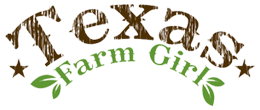04 May The Amazing Life of Coir
One man’s trash is another man’s treasure.
Even in agriculture, companies and farmers are coming up with new ways to recycle and reuse materials. One such company is Riococo Worldwide. Riococo uses byproducts of coconuts like pith, fiber, and husk which has traditionally been discarded as waste, to create coir products.
The coir industry in Sri Lanka, where Riococo sources their byproduct, began in the 1860s and involves creating things like brushes, mattresses, floor mats, etc. from coconut fibers.
From the coconut byproduct, Riococo makes coir products used in greenhouses to grow produce like tomatoes, kale, melons, berries and lettuce. The coir product serves as a soilless growing media and is used in greenhouses, gardening, roof top, indoor and open field farming.
According to Planet Natural, coir has great water retention and deters fungus gnats as well as certain diseases. Coir optimizes the nutrients used by the plant and growers have found their yields to be higher with its use as it has better steerability. Coir is biodegradable, renewable and non-toxic, while alternatives like peat and stonewool have more controversial environmental implications. In addition, after its use by commercial growers it can further be repurposed to be used as mulch in the community.
Coir can also be used in wetlands restoration by allowing plants to pre-root into coir mats and ensuring that the plants do not erode away. Restoring and protecting our wetlands is an important buffer in protecting our land.
Coir has so many wonderful benefits serving as an excellent solution in agriculture and our environment. With companies like Riococo, we can be thankful for all of their work in bringing a coir solution to market. Whether you’re a home gardener or a greenhouse farmer, your crop can benefit from coir.
To learn more about Riococo Worldwide, visit: www.riococo.com






Sorry, the comment form is closed at this time.